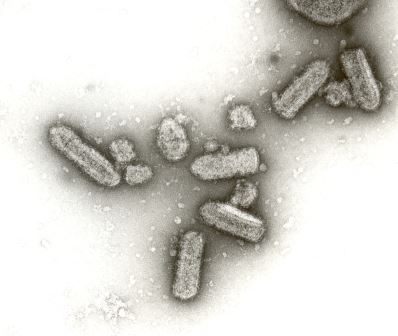Rabies - The disease
Rabies is caused by a neurotropic virus belonging to the genus Lyssavirus of the family Rhabdoviridae. Warm-blooded animals including humans (zoonosis) are susceptible to infection which after onset of symptoms leads to death in almost every case. Rabies is distributed worldwide with the exception of e.g. Australia, New Zealand, the United Kingdom, Sweden and Norway. The import of dogs and cats to the above-named countries is strictly regulated.
The incubation period of rabies lies between 2 weeks and 3 months; in humans it can be up to a few years in rare cases. The clinical signs are variable. The so called "furious rabies" is characterized by changes in the behaviour (restlessness, aggressivity, bite addiction). Complaints in gulping and an excessive salivation are common. At an advanced stage of the disease paralysis with signs of so called "dumb rabies" can be observed (paralysis of the facial, trunk and muscles of extremities). After outbreak of the disease eath occurs within 2 to 10 days by respiratory paralysis. If rabies is suspected an official veterinarian has to be informed immediately (notifiable disease).
The transmission of the virus occurs via bites or scratch wounds as well as through contact of open wounds and mucosal surfaces with virus containing fluids (e.g. saliva). After virus entry through peripheral nerves virus capsids are transported centripetal to the central nervous system. Neutralizing antibodies are present in the serum only shortly before clinical manifestation of the disease.
A reliable diagnosis of the infection (exclusion of infection in the case of a suspect) can usually not be obtained in vivo. Immunofluorescence or PCR on skin biopsies, cornea smears or saliva samples can be tried but only a positive result is valid. The virus can be detected post-mortem e.g. via direct immunofluorescense in smears of cerebral tissue (medulla, cerebellum, hippocampus).

